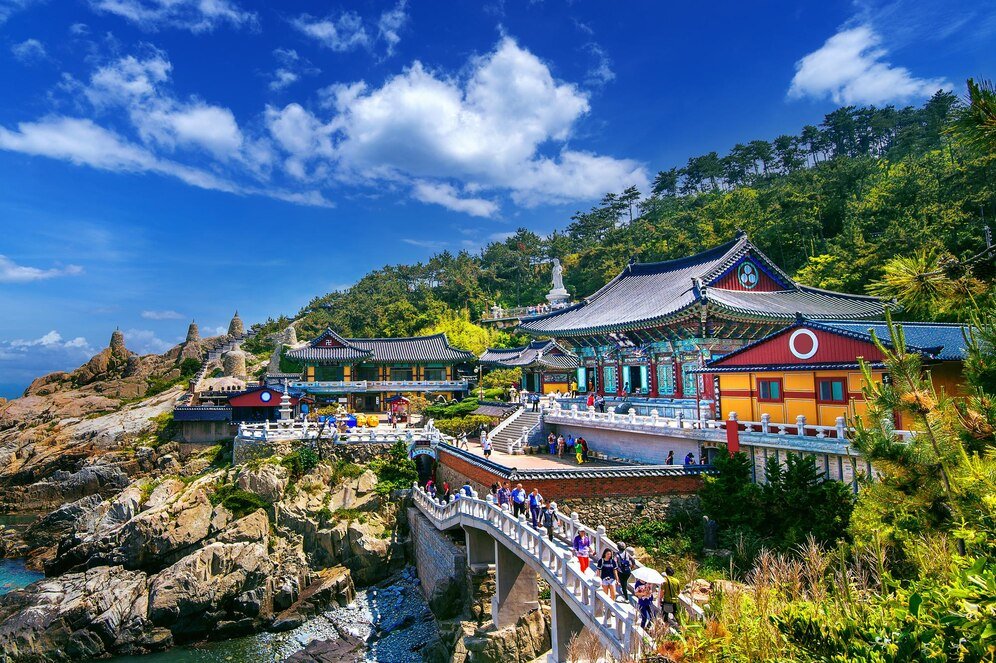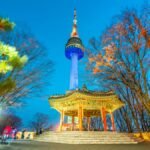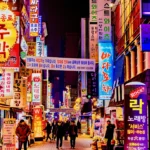1. Gyeongju: The Ancient Capital
Often referred to as “the museum without walls,” Gyeongju was once the capital of the Silla Kingdom. While it does attract tourists, many miss the quieter attractions. Visit the ancient tombs at Daereungwon, explore the beautiful Anapji Pond, and don’t miss the stunning Bulguksa Temple, a UNESCO World Heritage Site. The city is also home to the lesser-known Seokguram Grotto, a remarkable stone temple housing a serene Buddha statue.
2. Jeonju: A Culinary Haven
Jeonju is famous for its bibimbap, but there’s much more to discover. The Hanok Village features traditional Korean houses and is a great place to experience traditional culture. Explore local art galleries, craft shops, and quaint cafes. Make sure to stop by the Jeonju National Museum for a deeper understanding of the region’s history.
3. Sancheong: Nature and Healing
Nestled in the mountains, Sancheong is known for its natural beauty and herbal medicine. It’s perfect for hiking enthusiasts, with trails leading to stunning vistas and serene temples. Visit the Sancheong Herb Medicine Museum to learn about traditional Korean medicine and enjoy the tranquil atmosphere of the area.
4. Tongyeong: The Naples of Korea
Often overlooked for its more famous coastal counterparts, Tongyeong boasts breathtaking sea views and a rich maritime culture. Take a ferry to Donggeojin Island, visit the picturesque Dongpirang Mural Village, and indulge in fresh seafood at local markets. The cable car ride up Mireuksan Mountain offers panoramic views that are simply unforgettable.
5. Ulleungdo Island: A Remote Paradise
This volcanic island in the East Sea is a nature lover’s paradise. Famous for its stunning cliffs and unique flora and fauna, Ulleungdo is ideal for hiking, kayaking, and simply soaking in the serene landscape. The island’s lack of large crowds means you can truly escape and immerse yourself in nature.
6. Andong: Home of Hahoe Folk Village
Andong is a city steeped in tradition. Hahoe Folk Village is a UNESCO World Heritage Site where you can step back in time and experience traditional Korean culture. The village hosts various festivals throughout the year, including the Andong Mask Dance Festival, showcasing the region’s rich cultural heritage.
7. Sokcho: Gateway to Seoraksan National Park
While many visit Sokcho for Seoraksan National Park, few explore the city itself. Enjoy the beautiful beaches, stroll through the charming Sokcho Jungang Market, and savor fresh seafood. Don’t miss the stunning Abai Village, known for its unique Korean cuisine and picturesque setting.
8. Namhae Island: Tranquility and Scenic Beauty
Namhae Island, known for its scenic coastlines and rice terraces, is a perfect getaway for those seeking tranquility. Explore the charming village of Sangju, visit the German Village, and hike to the top of Geumsan Mountain for spectacular views. The island’s peaceful atmosphere makes it ideal for relaxation and rejuvenation.
9. Gwangju: The City of Art and History
Gwangju is often overshadowed by larger cities, but it is a cultural hub rich in art and history. Visit the Gwangju Biennale, one of Asia’s most prestigious art exhibitions, and explore the 518 Memorial Park, which commemorates the Gwangju Uprising. The city also offers a vibrant food scene, with traditional dishes waiting to be discovered.
10. Pyeongchang: Nature’s Playground
While Pyeongchang gained fame for hosting the 2018 Winter Olympics, many visitors overlook its stunning landscapes. The region is perfect for outdoor activities year-round, from skiing in winter to hiking in the summer. Explore the beautiful Odaesan National Park and indulge in local delicacies, including fresh trout and mushroom dishes.



